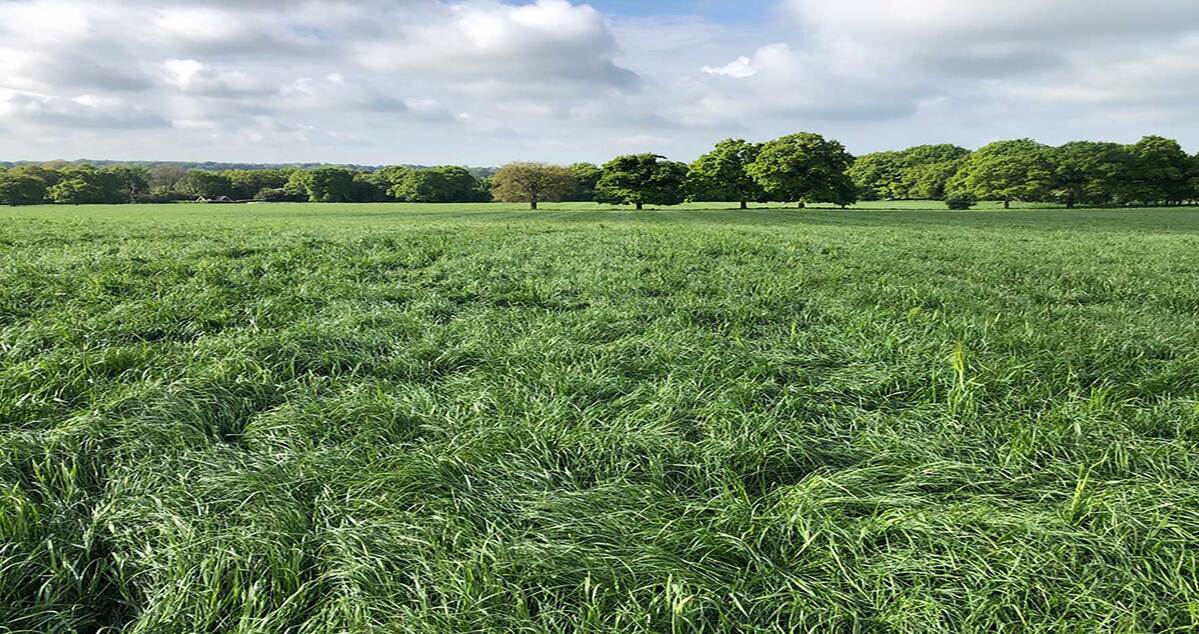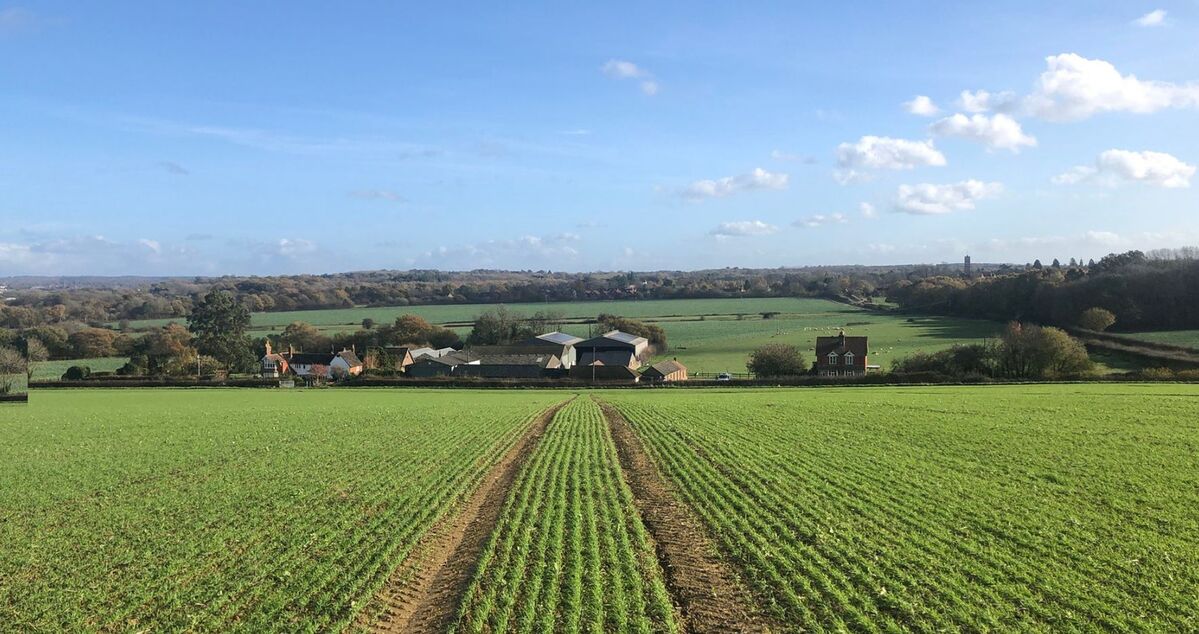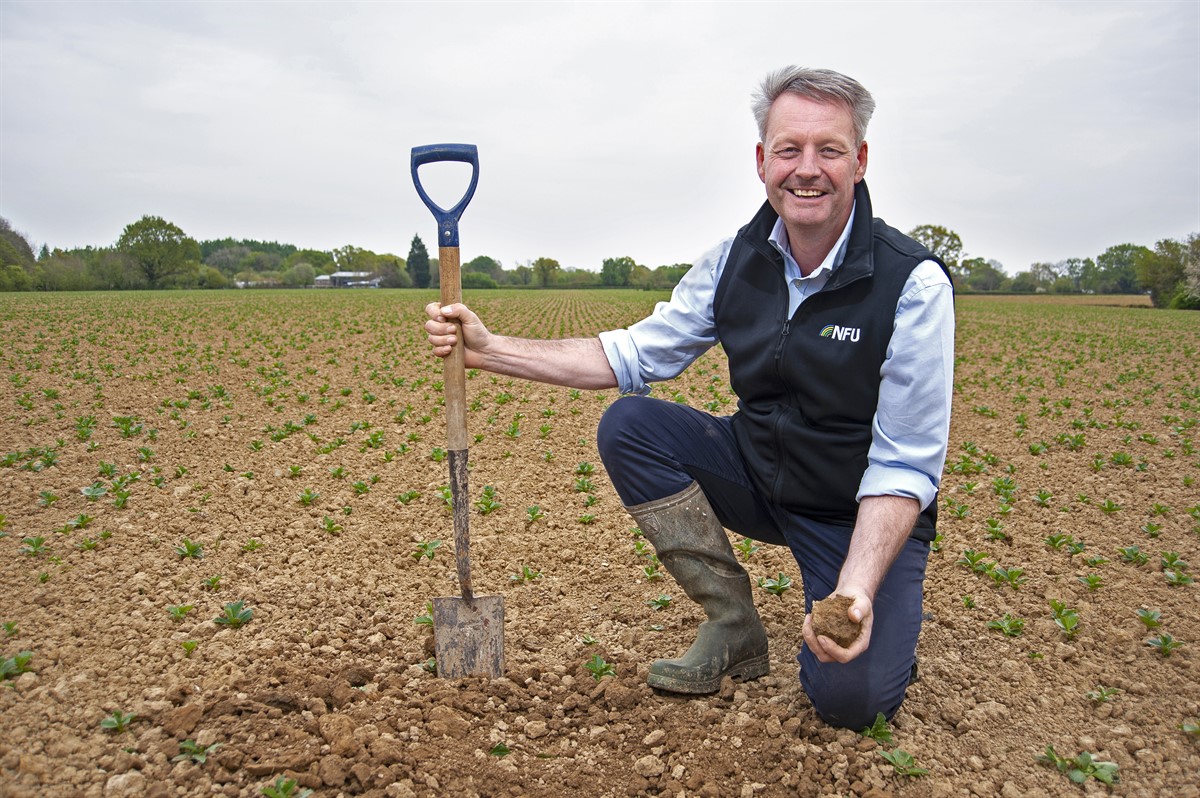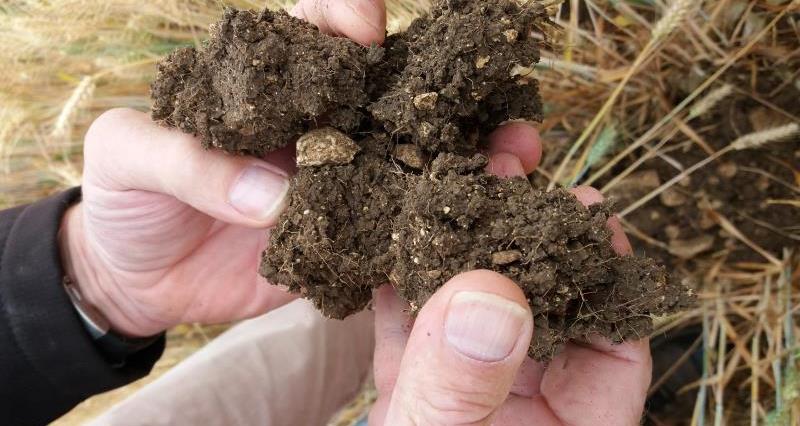David manages a mixed-farming business, located south of Horsham, West Sussex. The first generation farm has been in the family since 1990 and has a total land area of 2,500 acres, along with Weston’s Farm Shop. The shop, located within the farm grounds, offers locally reared meat and home grown or very local produce.
Around 1,800 acres is in a long, six year rotation of winter wheat, winter oats, winter oilseed rape, spring beans and spring maize. With the remaining land area consisting of temporary leys and permanent pasture grazed by sheep and beef cattle.
Physical characteristics
The soil texture is approximately 50% silt, 30% clay and 20% sand and classed as a silty-clay, characterised by a clay content greater than 50% which is highly productive but challenging to manage.
Silty-clay soils are advantageous due to their high cation-exchange capacity, good water holding capacity and ease of workability. However, silty-clay soils are notorious for poor water infiltration, tendency to crust and can become compacted.
The soil type is categorised as a planosol, defined as soils with stagnating water and abrupt textural discontinuity over a sub-surface layer of clay accumulation.
The undulating topography of the land also means diffuse pollution and runoff can be an issue in the area. The climate and soil type can create two extremes of waterlogged soils but alternately incredible periods of dryness. Therefore, soil management is crucial for crop productivity and environmental sustainability.
“Soil organic matter is key to the workability, sustainability and resilience of soils and cropping”.
David Exwood, NFU Vice President
Soil Management
A full soil test is carried out every three years to assess the health of the soil and if management can be changed to improve sustainability.
David has a particular interest in SOM and how it can be used to increase the water holding capacity of soil and overall health. SOM can be defined as all the organic materials found in a soil which are part of, or have previously been part of, living organisms. The optimal agricultural soil contains 45% minerals and 5% soil organic matter (SOM), with the remaining 50% being water and air-filled pore space.
David actively carries out practices with the aim of increasing the SOM content of his soils. Practices which can, in the long-term, contribute to the building of soil organic matter percentage in the soil are:
- long, diverse rotations
- cover cropping
- grass leys
- organic manures
- straw incorporation
- maintenance of drains
- careful timings
Increasing SOM content
The use of long and diverse crop rotations is known for increasing SOM because the quality and quantity of crop residues incorporated into the soil increases, which then becomes available to microbial communities to stabilise SOM.

Figure 1. Grass ley on David's farm
Furthermore, cover crops are considered a ‘green manure’ and are essential in increasing SOM. Cover crops are beneficial for overall soil health because they are grown over the periods when soils would otherwise be bare, protecting soil from degradation and promoting environmental resilience.
Maintenance of drains also enables improved soil health because a functioning drainage system allows soil to spend less time in an anaerobic state, aiding nutrient uptake, root growth and greater ability of soil to retain structure and withstand compression. In addition, careful timings, such as only ploughing when dry also benefits soil health.

Figure 2. Winter wheat crop on David's farm
Environmental and productivity benefits
Since focusing on SOM improvement, David has experienced an SOM increase of 1% in five years, with the current SOM percentage across the farm being between 3-4%. In response, the farm has seen dramatic improvements in yield and workability, along with less cultivations and reduced diesel usage.
Andy Neal at Rothamsted Research states that for a silty-clay loam “every 1% increase in soil organic carbon equates to a water holding capacity increase of 354,000 litres a hectare to a depth of 30cm." Crucially, soil texture has a great influence upon this, and the relationship is not linear.
The overall benefits associated with increasing SOM and subsequently the water holding capacity of soil primarily involve greater environmental resilience to extreme wet and dry periods. During dry periods, soils will hold more water and be able to withstand long periods of drought. Whereas during wet periods, soils will have a greater capacity to store water, reducing flooding and erosion.
Moreover, soils with a greater water holding capacity require less water from rainfall or irrigation, increasing their resilience and reducing the cost of irrigation and associated infrastructure. Overall, by increasing the water holding capacity of soil, crop yield and environmental resilience will be improved, promoting economic and environmental sustainability.



